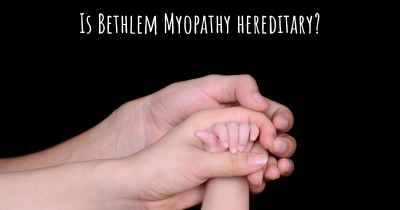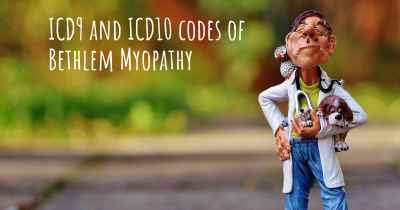What is the history of Bethlem Myopathy?
When was Bethlem Myopathy discovered? What is the story of this discovery? Was it coincidence or not?

Bethlem Myopathy, also known as Bethlem myopathy or benign autosomal dominant myopathy, is a rare genetic disorder that primarily affects the muscles and connective tissues in the body. It was first described by Dr. Pieter Bethlem, a Dutch physician, in 1976. The disorder is characterized by muscle weakness, joint stiffness, and contractures, which can lead to significant mobility issues and physical limitations.
The discovery of Bethlem Myopathy:
In the mid-1970s, Dr. Pieter Bethlem encountered a family with a unique set of symptoms that differed from other known muscle disorders. He observed three generations of individuals who experienced muscle weakness, joint contractures, and skin abnormalities. Dr. Bethlem conducted extensive clinical examinations and muscle biopsies, leading to the identification of this distinct disorder, which was later named after him.
Genetic basis and inheritance:
Bethlem Myopathy is caused by mutations in the COL6A1, COL6A2, or COL6A3 genes, which provide instructions for producing collagen VI proteins. Collagen VI is a crucial component of the extracellular matrix, a network of proteins that supports and connects cells in various tissues. The mutations in these genes disrupt the production or structure of collagen VI, leading to the characteristic muscle and connective tissue abnormalities seen in Bethlem Myopathy.
This disorder follows an autosomal dominant pattern of inheritance, meaning that an affected individual has a 50% chance of passing the mutated gene to each of their children. However, it is important to note that the severity of symptoms can vary even among affected family members due to differences in the specific genetic mutations.
Clinical features and progression:
Bethlem Myopathy typically presents in childhood or early adulthood, although milder cases may not be diagnosed until later in life. The most common symptoms include muscle weakness, particularly in the muscles closest to the trunk (proximal muscles), such as those in the hips, thighs, and shoulders. This weakness can lead to difficulties with walking, climbing stairs, and lifting objects.
Joint contractures, characterized by limited range of motion and stiffness, are another hallmark of Bethlem Myopathy. These contractures primarily affect the fingers, wrists, elbows, ankles, and neck, further impairing mobility. Additionally, individuals with this condition may experience muscle pain, fatigue, and respiratory complications.
Diagnosis and management:
Diagnosing Bethlem Myopathy involves a combination of clinical evaluation, family history analysis, muscle biopsies, and genetic testing. Muscle biopsies often reveal specific abnormalities in collagen VI proteins, supporting the diagnosis.
While there is currently no cure for Bethlem Myopathy, management focuses on alleviating symptoms and improving quality of life. Physical therapy and regular exercise can help maintain muscle strength and flexibility. Assistive devices, such as braces or mobility aids, may be recommended to enhance mobility and prevent contractures. Additionally, respiratory support may be necessary in severe cases to address breathing difficulties.
Research and future prospects:
Ongoing research aims to further understand the underlying mechanisms of Bethlem Myopathy and develop potential treatments. Experimental approaches, such as gene therapy and pharmacological interventions, are being explored to target the genetic mutations or compensate for collagen VI deficiencies. These advancements offer hope for improved management and potential therapeutic options in the future.
Posted Oct 21, 2017 by IGNACIO 3050








